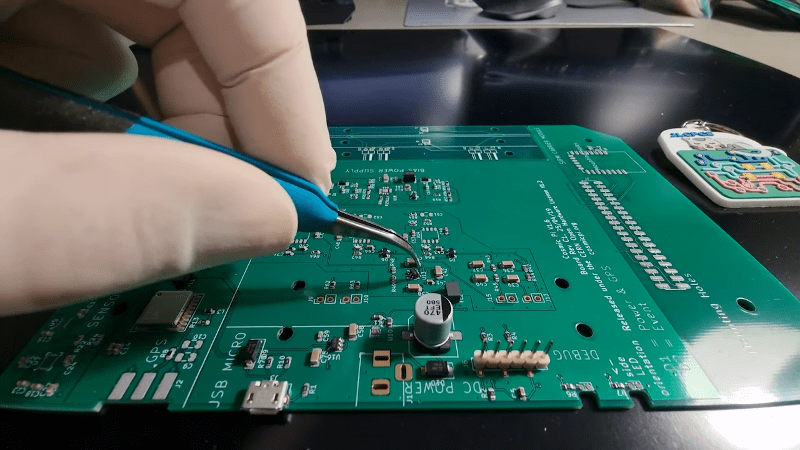[Marco] has a sodium iodide detector that indicates cosmic radiation by scintillation. The material glows when hit by cosmic rays and, traditionally, a photomultiplier tube detects the photos from the detection. After a quick demonstration that you can see in the video below, he built the Cosmic Pi, a CERN project to create a giant distributed cosmic ray detector. The Cosmic Pi uses scintillation, but not from a crystal. It uses a plastic scintillator and silicon photodetectors, so it is much easier to work with than a traditional detector.
Using a four-layer board and some harvested components, the device detects muons. There are two scintillation detectors and muons striking both detectors presumably don’t have a local origin. The instrument has a GPS to get accurate time and position data. There are other sensors onboard, too, to collect data about the conditions of each detected event.
Overall, it looked like a fun build. It was necessary to block the case from leaking light which could interfere with the sensitive measurements. We always appreciate citizen science projects and these massively distributed instruments are particularly exciting since you can be part of something really large.
We’ve seen cosmic ray detectors before. We’ve even seen them using people’s cell phones.















I love his videos!
I wouldn’t mind having such a detector here in SE Minnesota.
All of us on the Cosmic Pi team really enjoyed Marco’s video, and this article! Thanks to everyone for your interest and support in our project. Also, we just collected our 10 millionth cosmic ray, you can see it all in ~real time at our data portal.
The real innovation here is that photodiodes have become sensitive enough to be used in some applications. Plastic scintillator for muon detection is not even remotely new.
But good photodiodes make a huge difference. Photomultiplers are very sensitive to magnetic fields and require high voltage. Photodiode prices have come down as sensitivity has gone up. So pretty much that is all that is new.
I have a photomultiplier in a box on a shelf in my garage.
I have no idea if it is good or bad.
Nice build, as usual. Is there a lot of scientific value in having a large distributed network of these detectors?
He explains that in the video. For instance seeing if a spike in measurements is a fluke of your detector, or if others in the vicinity also pick it up.
I get that part, but I’m more interested in the overall scientific value of having a large network of these. As in, how does it help us understand our universe better.
It is hard to say what interesting thing we might find if anything. The only way to find out what is out there is to look.
As a side note: These tiny hotplates are so cool! :D
I just saw this in an email flyer from Seeeeeedstuuuuuudiiiiiiio
https://www.seeedstudio.com/Mini-Hot-Plate-Preheater-MHP30-p-4751.html?utm_source=mailchimp&utm_medium=edm&utm_campaign=us_bazaar_0317&ct=t()&mc_cid=55b9d4b34d
I enjoy his videos. Incredibly dry humour.
Fascinating!
Incidentally nice big diodes can be had from broken 1970s era photoelectric smoke alarms.
Have two here just waiting for a worthy project.
My plan is to use a Fresnel lens, scintillator screen with an outer light blocking panel and a suitable pipe
with high qualty glass lens to focus light from the screen.
Might work though quite bulky.
Also use conventional SBM GM tubes as verification, though the pulse windowing would be a pain due to
dead time I have enough spare modular power supplies and dropper diodes to build this.
Would anyone be interested in seeing what I’ve found that is before it came to me in a way a firefighter is only the firestarter. Also what looks to be a thinking cap with its own point of Intrest or words to pick up on through expressions. So I went with truth and how to better everyone and the earth .
The best random number generator for cryptographic applications.